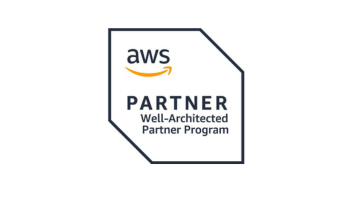


AWS Well-Architected Review
The Well-Architected Framework was developed by AWS to help cloud architects design and continually improve secure, high-performing, resilient, and cost-optimized infrastructure for their applications.
Techpartner cloud architects have deep knowledge of the subject matter and provide a custom-tailored solution for the customer. This results in increased velocity of digital innovation, lower capital expenditures, using the same state of the art infrastructure as used by security-focused organizations, and the ability to achieve a global scale in minutes.
The Well-Architected Review is a systematic approach to evaluating AWS architectures and can help you identify and fix potential issues with your environment. It is based off the AWS Well-Architected Framework, which is a comprehensive set of AWS best practices.
The 6 Pillars of the Well-Architected Framework
Closely aligned with the AWS Well Architected Framework, the Innovative Well-Architected Review evaluates your cloud solution against six key areas:
Operational Excellence
Improving business outcomes and delivering value to customers and your bottom line are fundamental goals of your cloud strategy. We help you achieve these goals by looking at your processes against a set of design principles and best practices. We’ll help you identify gaps and recommend ways to measure, monitor, and continually improve operations.
Performance Efficiency
The cloud is not static; it is continually evolving with new capabilities enabling new strategies and implementations. Are you keeping up? By reviewing your choices on a cyclical basis, you will ensure you are taking advantage of the continually evolving AWS cloud. The optimal solution for a particular system will vary based on the kind of workload you have, often with multiple approaches combined. Well-architected systems use multiple solutions and enable different features to improve performance.
Sustainability
The ability to continually improve sustainability impacts by reducing energy consumption and increasing efficiency across all components of a workload by maximizing the benefits from the provisioned resources and minimizing the total resources required.
Reliability
Disruptions in service are costly. We will assess your ability to dynamically acquire computing resources to meet demand, and mitigate disruptions such as misconfigurations or transient network issues. When an event occurs, how fast can you get back online? We’ll check to see if your system can detect failures and heal them automatically. You must have sufficient network bandwidth to your data center. These requirements are sometimes neglected. This neglect can have a significant impact on the ability to deliver a reliable system.
Cost Efficiency
To truly understand the effectiveness of your cloud strategy, you have to have a clear understanding of your business goals. In other words, it’s not simply how much are you paying, it’s how much business value are you getting. For example, do you want to optimize for speed to market or for cost? In some cases, it’s best to optimize for speed – going to market quickly, shipping new features, or simply meeting a deadline – rather than investing in upfront cost optimization.
Are you over-compensating to make sure your resources “just in case” rather than spending time benchmarking for the most cost-optimal deployment? This often leads to drastically over-provisioned and under-optimized deployments. We can help you optimize your spend against measurable and prioritized business outcomes.
Security
All systems are constantly under attack by evolving threats. Your cloud security strategy must evolve to stay ahead by using AI-generated security insights, automated monitoring and remediation, logging, tracing, periodic risk assessments, and mitigation strategies. We’ll look at your enterprise holistically – people, process, and data in transit and at rest – to ensure your security strategy is built on a strong foundation.

